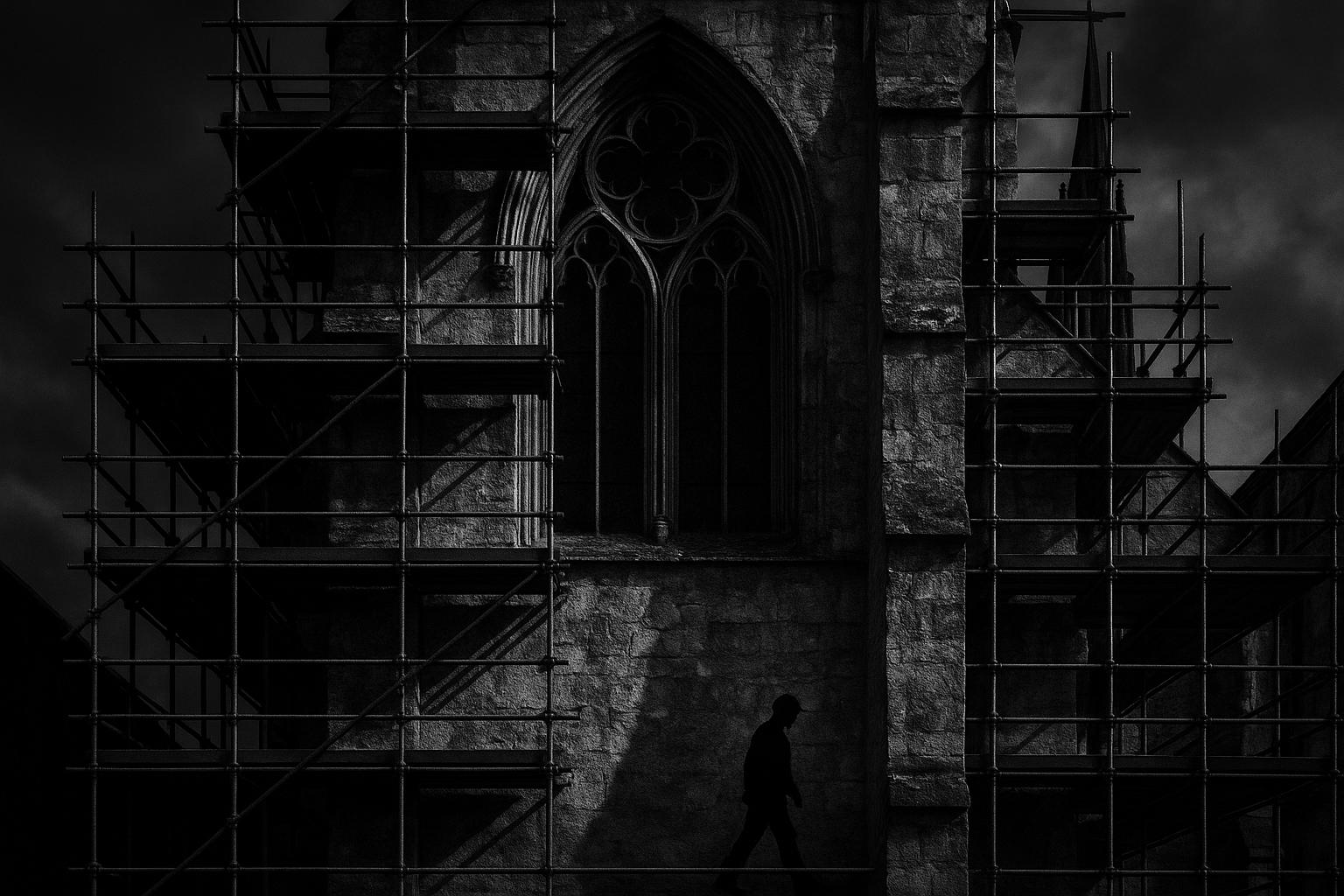The Church of St Mary the Virgin in Somers Town and the Greenhouse Centre in Marylebone are among 37 at‑risk heritage sites across England to receive money from Historic England’s new Heritage at Risk Capital Fund, a one‑year, £15 million programme aimed at rescuing buildings that serve disadvantaged communities. St Mary’s has been awarded £639,064 to address urgent fabric repairs, while the Greenhouse Centre will receive £663,100 to complete structural upgrades and safety works that will allow it to reopen as a youth and community hub.
St Mary the Virgin, the Grade II‑listed Gothic church on Eversholt Street long embedded in the Somers Town community, has been under protective scaffolding while its west front awaits conservation. According to local reporting and church notices, the grant will pay for masonry, brickwork and joinery repairs, repointing, cleaning and drainage improvements intended to stabilise the building, prevent closure or demolition and allow further phases of restoration to be planned so it can continue as a place of worship and community support.
The Greenhouse Centre, a converted 17th‑century church in Cosway Street that was remodelled as a youth sports and wellbeing space in 2018, closed in 2021 after serious structural defects. The charity behind the project says a multi‑year restoration has already included roof replacement, foundation reinforcement and extensive window and stonework repairs; the new grant is earmarked to strengthen the main floor, install modern fire‑protection systems and complete the conservation work needed for the Centre to reopen and expand its outreach to young people living in poverty.
The fund is being delivered by Historic England with backing from the Department for Culture, Media and Sport and forms part of the wider Arts Everywhere Fund and the government’s Plan for Change. Historic England’s published guidance describes the scheme as a short, targeted intervention for assets at risk in the most deprived areas, with typical awards between about £200,000 and £800,000 and conditions around public access, procurement and match funding. Projects awarded through this round must spend their grants by March 2026, under the fund’s timetable.
Historic England and ministers framed the intervention in social as well as heritage terms. Louise Brennan, director of regions at Historic England, said in a statement carried by the agency that the extra funding will “breathe new life into neglected historic buildings that we haven’t been able to help through our existing grant schemes.” The heritage minister, Baroness Twycross, told a government press release that the programme is intended to “breathe new life into treasured places, buildings and monuments across the country, helping to increase opportunities and ensuring that future generations have access to our rich heritage.”
Officials and the programme literature emphasise wider community and economic benefits: the scheme prioritises projects that can deliver jobs, local services and longer‑term community value as well as repair work. At the same time, the compressed delivery window and expectations of match funding mean recipients must move quickly to translate awards into completed works or later phases of restoration, a point underlined by local organisations planning follow‑on fundraising and conservation phases.
Taken together, the 37 awards underline a targeted attempt to prevent further loss of local heritage by prioritising sites that can deliver social as well as conservation outcomes. For congregations and community groups in Somers Town and Marylebone, the injections of capital offer a practical route out of prolonged uncertainty and a chance to reopen historic spaces for worship, sport, wellbeing and neighbourhood activity.
📌 Reference Map:
##Reference Map:
- Paragraph 1 – [1], [4], [3]
- Paragraph 2 – [1], [5], [7]
- Paragraph 3 – [1], [6], [7]
- Paragraph 4 – [2], [3]
- Paragraph 5 – [1], [4], [3], [2]
- Paragraph 6 – [3], [2], [4]
- Paragraph 7 – [4], [3], [2]
Source: Noah Wire Services
